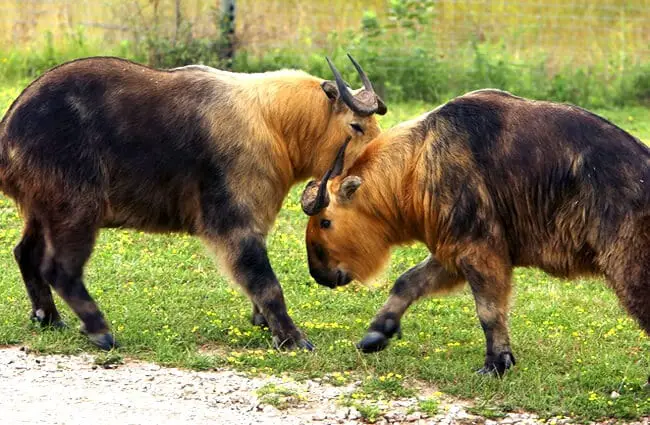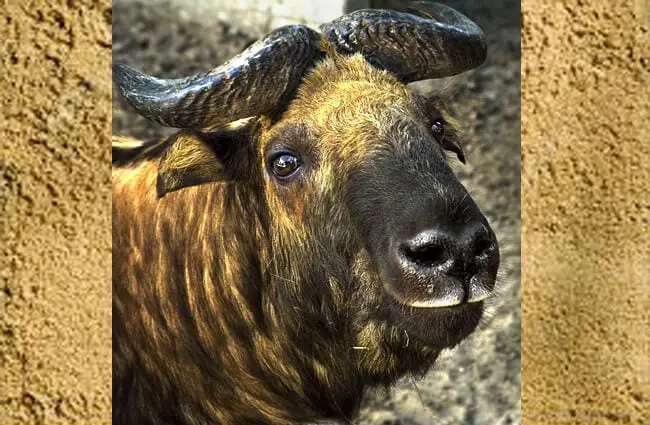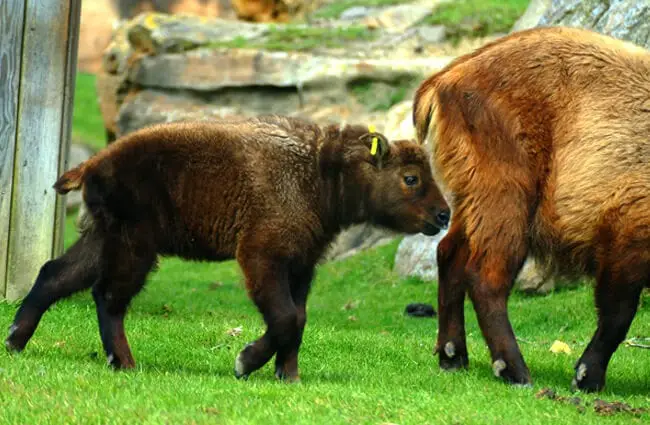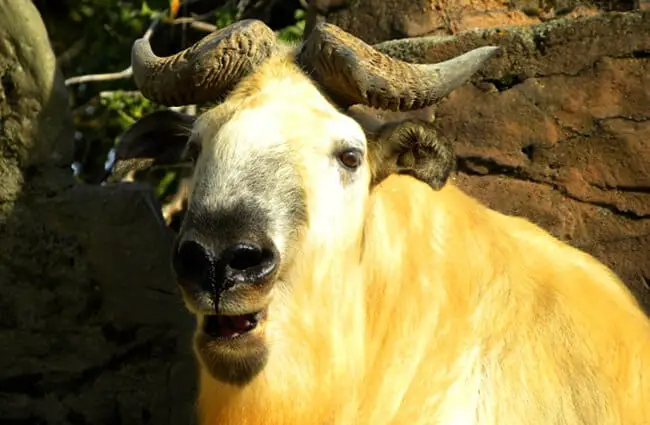The Enigmatic Takin: A Comprehensive Guide
Often described as a “bee-goat” or a “goat-antelope,” the Takin is a fascinating and elusive mammal native to the Eastern Himalayas and southwestern China. These striking animals, with their muscular builds and unique coloration, hold a special place in both the natural world and local cultures. This guide delves into every aspect of the Takin’s life, from its evolutionary history to its current conservation status, offering insights for students, animal enthusiasts, and anyone curious about this remarkable creature.

Understanding the Takin
What is a Takin?
The Takin is a large ungulate belonging to the subfamily Caprinae, which includes goats, sheep, and antelopes. There are four recognized subspecies, each adapted to its specific environment. They are characterized by their robust bodies, powerful shoulders, and relatively short legs, giving them a stocky appearance. Adult males are particularly imposing, possessing a thick mane of dark hair that extends down their backs. Their coat color varies, ranging from golden to reddish‑brown, providing excellent camouflage within their forest and shrubland habitats.
Subspecies of Takin
- Bhutan Takin (Budorcas taxicolor whitei): The nominate subspecies, found in Bhutan and India.
- Mishmi Takin (Budorcas taxicolor mishmiensis): Inhabits the Mishmi Hills of Arunachal Pradesh, India.
- Sichuan Takin (Budorcas taxicolor sinensis): Found in the Minshan Mountains of Sichuan, China.
- Qinling Takin (Budorcas taxicolor qinlingensis): The most recently recognized subspecies, residing in the Qinling Mountains of Shaanxi, China.
Habitat and Distribution
Takins thrive in the mountainous regions of the Eastern Himalayas and southwestern China, favoring steep slopes, dense forests, and alpine meadows. They are typically found at altitudes ranging from 2,500 to 4,500 meters (8,200 to 14,760 feet). The Sichuan and Qinling Takins have a more restricted range compared to the Bhutan and Mishmi Takins. They prefer areas with ample bamboo, which forms a significant part of their diet. The availability of water sources is also crucial, as they need to drink regularly. Their habitat provides both shelter from predators and a reliable food supply.

Evolutionary History
The evolutionary history of the Takin is somewhat enigmatic. Fossil evidence is limited, but genetic studies suggest they diverged from other caprine species relatively recently. Their unique characteristics, such as their muscular build and tolerance for high altitudes, likely resulted from adaptations to the challenging mountainous environments they inhabit. The isolation of different populations also contributed to the development of distinct subspecies.
Diet and Feeding Habits
Takins are primarily grazers, consuming a wide variety of vegetation, including grasses, bamboo shoots, leaves, and herbs. Bamboo is a particularly important food source, especially for the Sichuan Takin. They use their strong jaws and teeth to efficiently process tough plant matter. During the winter months, when food is scarce, they may resort to browsing on shrubs and tree bark. Takins are known to be selective feeders, choosing nutritious plants and avoiding toxic ones. They are also capable of digging through snow to access buried vegetation. Their diet plays a vital role in their survival and reproductive success.
Social Behavior and Reproduction
During the breeding season, which typically occurs in late summer and autumn, males engage in fierce battles for dominance and mating rights. These contests involve charging, butting heads, and displaying their strength and size. The winner gains access to a group of females. Gestation lasts approximately 210 to 220 days, resulting in the birth of a single calf. Calves are typically born in the spring and are nursed for several months. They remain with their mothers for at least a year, learning essential survival skills. Takins are generally social animals, forming herds of varying sizes. Herd size can range from a few individuals to several dozen, depending on the availability of resources and the presence of predators.

Ecological Role
Takins play a crucial role in their ecosystems. As herbivores, they influence plant growth and distribution, shaping the vegetation structure. They also serve as prey for large carnivores, such as leopards, tigers, and wolves, contributing to the food web. Their grazing activities can promote biodiversity by creating open areas that allow different plant species to thrive. Furthermore, their presence indicates a healthy and balanced ecosystem. Their decline can have cascading effects on other species and the overall health of the environment.
Interaction with Humans
Historically, Takins have been hunted for their meat and hides by local communities. However, hunting is now largely prohibited in most areas. They are also considered sacred animals in Bhutan, where they are a symbol of national pride. Conflicts between Takins and humans can occur when they raid crops or damage agricultural land. Conservation efforts are essential to protect Takin populations and minimize these conflicts. Promoting sustainable land management practices and providing alternative livelihoods for local communities can help ensure the long‑term survival of these magnificent animals.
Conservation Status and Threats
The Takin is classified as “Vulnerable” by the International Union for Conservation of Nature (IUCN). Their populations are declining due to habitat loss, poaching, and competition with livestock. Deforestation and agricultural expansion are major threats to their habitat. Poaching, although illegal, continues to occur in some areas. Climate change is also posing a growing threat, as it alters their habitat and disrupts their food supply. Conservation efforts include habitat protection, anti‑poaching patrols, and community‑based conservation programs. Captive breeding programs are also being implemented to maintain genetic diversity and supplement wild populations.

Encountering Takin in the Wild: A Guide
If you are fortunate enough to encounter a Takin in the wild, it is essential to observe them from a safe distance. Avoid approaching them or attempting to feed them. Make no sudden movements and keep your voice down. If they appear agitated or threatened, slowly back away. Respect their space and allow them to continue their natural behaviors. Report any sightings to local conservation authorities.
Caring for Takin in Captivity
Zookeepers caring for Takins in captivity must provide them with a spacious enclosure that mimics their natural habitat. This should include a mix of grassy areas, rocky outcrops, and forested areas. A varied diet consisting of grasses, bamboo, leaves, and other vegetation is essential. Regular veterinary care is crucial to monitor their health and prevent diseases. Providing enrichment activities, such as puzzle feeders and browse materials, can help stimulate their minds and keep them active. Social interaction with other Takins is also important for their well‑being.
Fascinating Takin Facts
- Takins have a unique scent gland located near their anus, which they use for communication.
- They are surprisingly agile climbers, able to navigate steep slopes with ease.
- Takins can live for up to 15 years in the wild and longer in captivity.
- They are known to use mud and dust to protect their skin from insects and parasites.
- The Bhutanese national animal is the Takin.


The Takin, a captivating creature of the Eastern Himalayas, continues to inspire awe and wonder. By understanding their biology, behavior, and conservation needs, we can ensure their survival for generations to come. Their story is a testament to the importance of protecting biodiversity and preserving the natural world.

![Red Angus Closeup of a beautiful Red Angus cowPhoto by: U.S. Department of Agriculture [pubic domain]https://creativecommons.org/licenses/by/2.0/](https://animals.net/wp-content/uploads/2020/03/Red-Angus-4-238x178.jpg)




![Red Angus Closeup of a beautiful Red Angus cowPhoto by: U.S. Department of Agriculture [pubic domain]https://creativecommons.org/licenses/by/2.0/](https://animals.net/wp-content/uploads/2020/03/Red-Angus-4-100x75.jpg)

